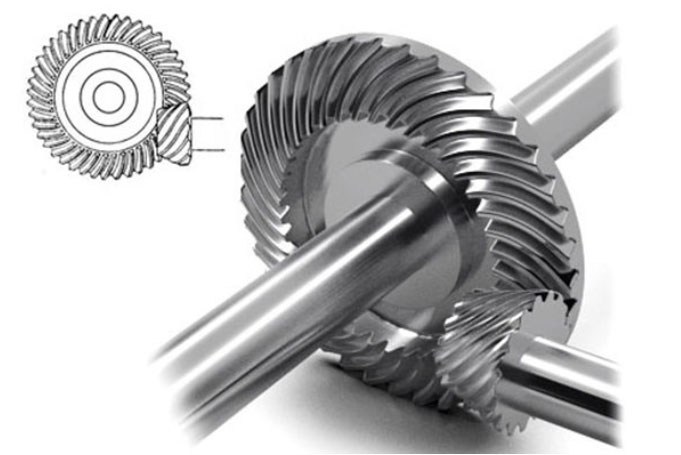Hypoid gear technology offers several performance enhancements in various applications. Let’s explore some of the key ways in which hypoid gears enhance performance:

- Power Transmission Efficiency: Hypoid gears are designed to achieve high power transmission efficiency. The unique tooth profile and offset configuration minimize sliding friction and improve mechanical efficiency compared to other gear types. This translates into more efficient power transfer, reduced energy losses, and improved overall system performance.
- Torque Capacity: Hypoid gears have a high torque capacity, making them suitable for applications that require the transmission of substantial torque loads. Their offset design allows for increased contact area between the gear teeth, resulting in improved load-carrying capacity and torque transmission capabilities. This makes them ideal for demanding applications such as automotive differentials and heavy machinery.
- Compact Design: Hypoid gears offer a compact and space-saving design compared to other gear types. The offset arrangement of the pinion and ring gear allows for a smaller overall gear assembly, making them valuable in applications with limited space constraints. This compactness enables designers to optimize the layout of machinery and equipment, resulting in improved system efficiency and reduced weight.
- Noise and Vibration Reduction: Hypoid gears exhibit reduced noise and vibration levels during operation. The offset configuration minimizes gear mesh noise and the sliding action between the gear teeth helps to dampen vibrations. This contributes to a quieter and smoother gear operation, enhancing the comfort and user experience in applications such as automotive drivetrains and industrial machinery.
- Versatility in Gear Ratios: Hypoid gears offer a wide range of gear ratios, allowing for flexibility in system design and optimization. This versatility enables engineers to select gear ratios that align with the specific requirements of the application, such as balancing speed, torque, and operating conditions. The ability to achieve precise gear ratios enhances overall system performance and efficiency.
- Enhanced Load Distribution: The offset design of hypoid gears enables improved load distribution across the gear teeth. This distributes the load more evenly, reducing stress concentrations and increasing the overall strength and durability of the gear system. The enhanced load distribution contributes to a longer gear life and improved reliability, particularly in high-load applications.
- Heat Dissipation: Hypoid gears have an advantage in heat dissipation compared to some other gear types. The sliding action between the gear teeth helps to distribute heat generated during operation, reducing the risk of overheating. This is especially beneficial in high-speed and high-torque applications where heat buildup can negatively impact performance and reliability.
- Compatibility with Lubrication Systems: Hypoid gears are compatible with various lubrication systems, including oil bath lubrication and forced lubrication methods. Effective lubrication is crucial for reducing friction, wear, and heat generation in gear systems. The ability of hypoid gears to work well with different lubrication systems contributes to their overall performance and longevity.
- Advanced Manufacturing Techniques: The advancement of manufacturing technologies has further improved the performance of hypoid gears. CNC machining, precision grinding, and computer-aided design and manufacturing (CAD/CAM) techniques enable the production of highly precise and high-quality hypoid gears. These manufacturing advancements ensure the dimensional accuracy, smooth gear operation, and overall performance of hypoid gear systems.
Hypoid gear technology offers numerous performance enhancements, including high power transmission efficiency, increased torque capacity, compact design, reduced noise and vibration, versatility in gear ratios, enhanced load distribution, effective heat dissipation, compatibility with lubrication systems, and advanced manufacturing capabilities. These advantages make hypoid gears well-suited for a wide range of applications, from automotive and industrial machinery to aerospace and marine systems, where performance, reliability, and efficiency are paramount.
